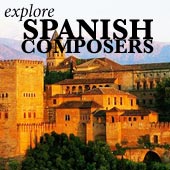The Chopin Etude
Challenge and Beauty in One
Each Chopin Etude is a staggering blend of difficult piano technique and highly artistic music.
Chopin's etudes cleverly invent and solve piano playing problems. The music itself is also enjoyable - extremely artistic and superbly high quality.
They were a completely new kind of piano study, influencing loads of later composers.
Chopin penned 27 etudes altogether. There are two sets of twelve pieces each (Op. 10 and Op. 25), published in 1833 and 1837, and an extra three etudes which he wrote in 1839.
Every etude has its own special character, as well a certain technical hurdle for the pianist to conquer.
For example, the Black Key Chopin Etude (Op. 10 No. 5) has a lively and joyous feeling. But the pianist's right hand plays only on the black keys (well, except for one white key in the middle...), so it's fairly tricky too!!
The Op. 10 and Op. 25 sets mostly all have little descriptive titles, like Ocean, The Horseman, and Sunshine.
But these interesting names didn't come from Chopin's imagination - his publishers added them afterwards, to the composer's annoyance!
Here is every Chopin etude...
Op. 10
- No. 1 in C major, Waterfall. An lively introduction to the first set. This Chopin etude teaches stretching in the right hand.
- No. 2 in A minor, Chromatic. A subtle and complex piece. The challenge is to play a continuous chromatic (colored) scale during the whole piece, with the weakest fingers of the right hand (fourth and fifth fingers)!
- No. 3 in E major, Tristesse. A slow and nostalgic piece. This is one of Chopin's most popular pieces
- No. 4 in C-sharp minor, Torrent. A fast and violent piece. The pianist has to play quickly but softly, and switch the melody from hand to hand often.
- No. 5 in G-flat major, Black Key. A supremely happy piece, which trains the performer to play on the black keys of the keyboard.
- No. 6 in E-flat minor. A beautifully emotional and atmospheric piece. It's not fast or too difficult, but the player has to bring out two melodies at the same time, and keep a tense mood throughout.
- No. 7 in C major, Toccata. A quirky piece, with the right hand playing a never-ending sequence of perpetually-changing two-note intervals.
- No. 8 in F major, Sunshine. Another happy and lively piece. The challenge is simply for the right hand to play quickly.
- No. 9 in F minor. A darker piece, with a spooky feeling. The left hand sections are quite tricky.
- No. 10 in A-flat major. The difficulty here is that the pianist has to control an unusually constructed melody. It's a charming little piece, though.
- No. 11 in E-flat major, Arpeggio. This is the 'harp' etude. All the chords are bigger than a normal person's hands, so the pianist has to roll his hand over them in a cartwheel to play all the notes. The resulting sound is very "harp-like"!
- No. 12 in C minor, Revolutionary. A dramatic and powerful Chopin etude, with a thundering left hand passage underneath a forceful melody in the right hand. Not for the weak-hearted!

Op. 25
- No. 1 in A-flat major, Aeolian Harp. Chopin creates a unique four-hand illusion here, which it goes without saying is quite tricky to play!
- No. 2 in F minor, The Bees. An extremely fast piece, which is actually quite delicate. The main problem is the different rhythms which each hand plays, which require a strong musical instinct to get right.
- No. 3 in F major, The Horseman. A joyful and spirited piece, which has an interesting and tricky rhythm, as well as requiring flexibility and speed. One of my favorites!
- No. 4 in A minor. This agitated piece has lots of jumps in the left hand, which are difficult to play at the proper speed.
- No. 5 in E minor, Wrong Note. The piece earned its name from the fact that it has lots of extra "grace" notes (short notes which come just before an accented note), which sound like the pianist is being clumsy and playing it wrong. It's tricky to get it to sound artistic and not a total mess!
- No. 6 in G-sharp minor, Thirds. As the name suggests, the main issue here is the interval of a third which is everywhere, and tricky to play one after the other. Some nimble fingerwork is required!
- No. 7 in C-sharp minor, Cello. A sweet and slow piece. The melody is mostly in the left hand, and sounds very "cello-like".
- No. 8 in D-flat major, Sixths. Same with the "thirds" etude, but this time with a bigger interval. This is a cheerful and fun piece.
- No. 9 in G-flat major, Butterfly. A light and energetic piece, which is extremely fast (but still graceful).
- No. 10 in B minor, Octaves. An angry and powerful study in double octaves (both hands playing octaves), so there are four of the same note spread out across the keyboard at any on time.
- No. 11 in A minor, Winter Wind. An intensely vivid piece, with a wrist-snappingly violent right hand section. Fast and dramatic, it's one of the more difficult etudes.
- No. 12 in C minor, Ocean. A sweeping majestic piece, which involves both hands constantly running up and down the keyboard while the noble melody is punctuated in the bass.
3 New etudes
- No. 1 in F minor. Easier than the other two sets of etudes, but still difficult to perform. This is a dark and liquid piece.
- No. 2 in A-flat major. A cheerful piece, which is a study in different rhythms in the right and left hand.
- No. 3 in D-flat major. A slightly quirky, if still joyful piece, with constantly changing intervals in the right hand.
Click to explore Chopin's dazzling Polonaises, which are almost as hard as the etudes!
Popular Favorites
Good Recordings
Since the Chopin etudes are so famous, pretty much every major pianist has had a shot at them.
The most celebrated recordings are probably those by Murray Perahia and Maurizio Pollini. I quite like Perahia's subtle way of bringing out all the intricacies of harmony in each Chopin etude.
Pollini has a reputation as being a bit intellectual in his performances at times, but I think he still manages to keep drama and power in his recording.
Click to read a biography of Maurizio Pollini
Personally, I like Vladimir Ashkenazy's interpretations, from the 1997 Decca recording of Chopin's complete piano works. Ashkenazy has amazing control and precision, and an amazing expressive quality in the slower pieces. My recommendation!
You might also be interested in Chopin's preludes, or his beautiful nocturnes.
If you like my site, please click "Like"... thanks!



